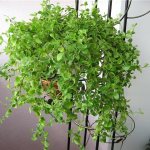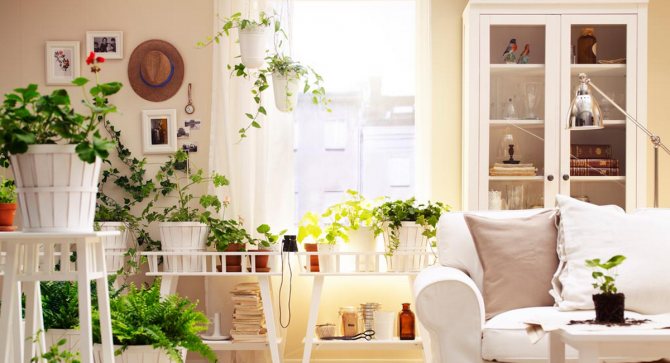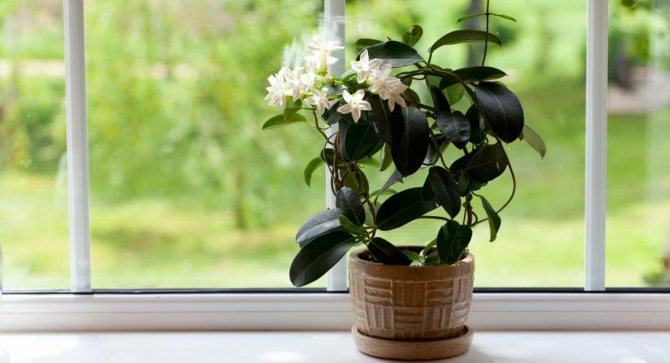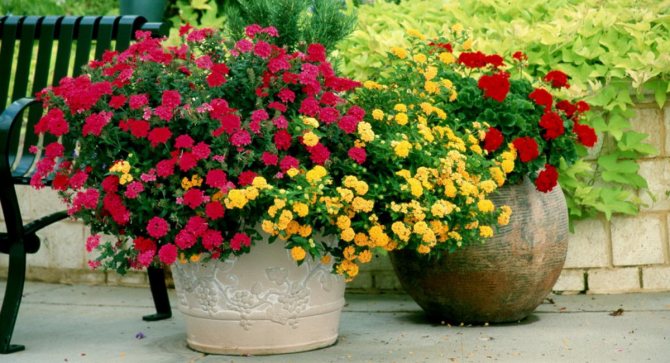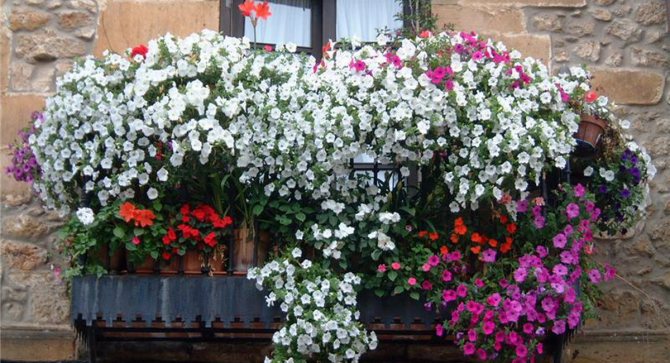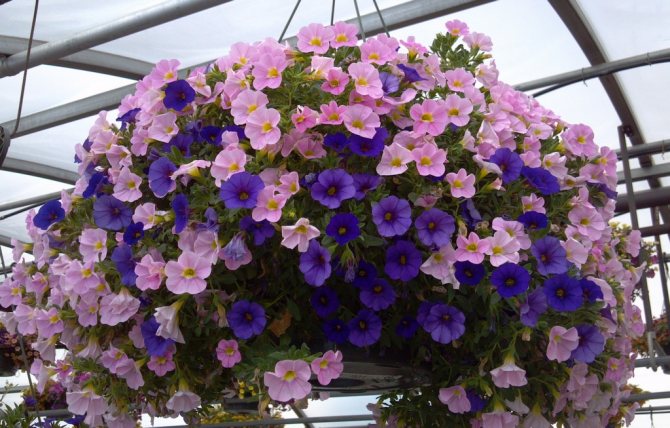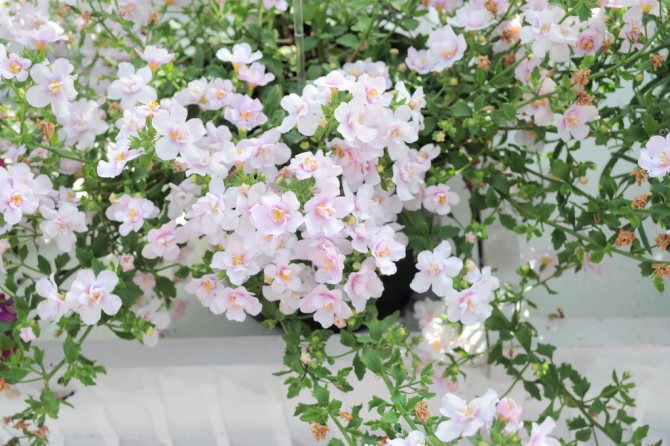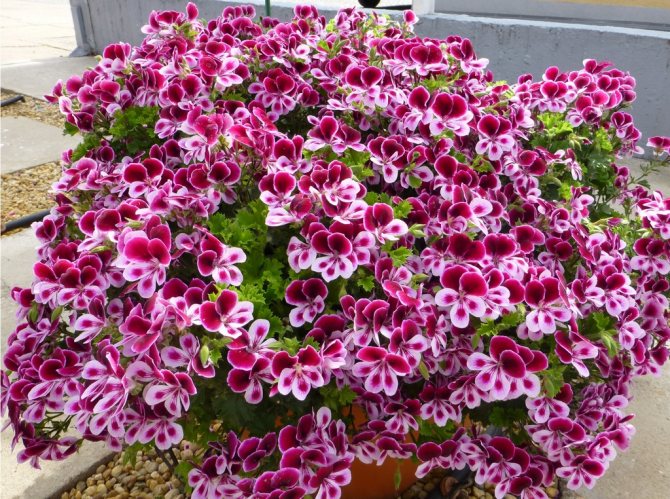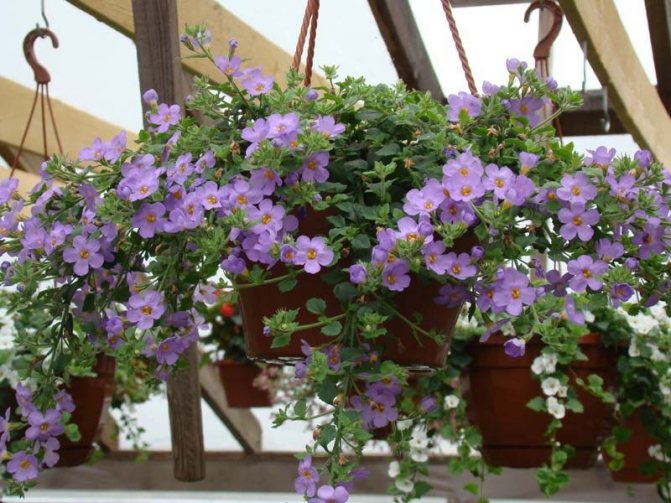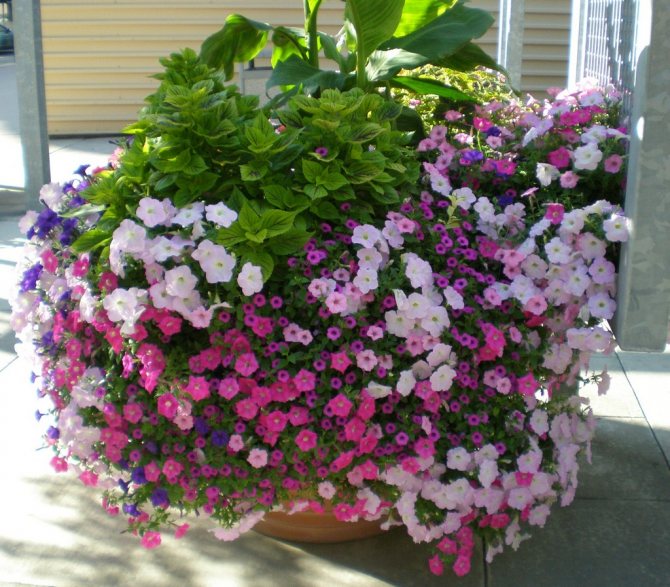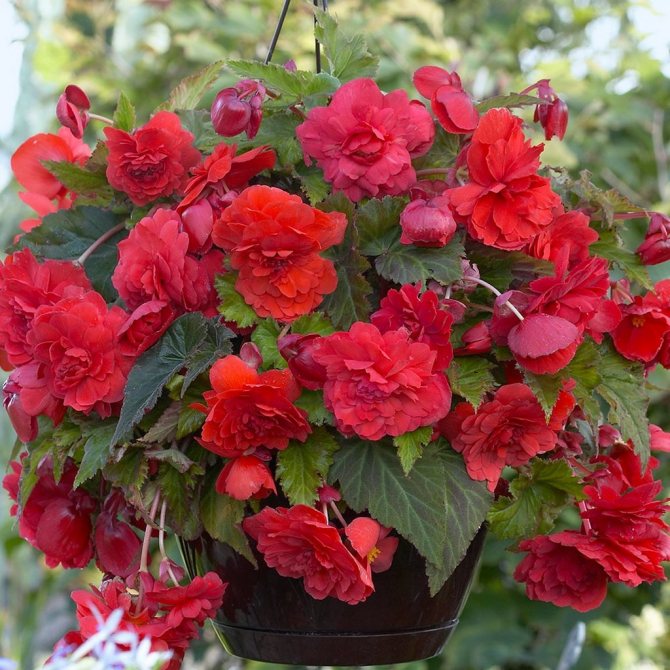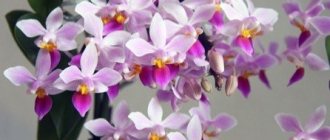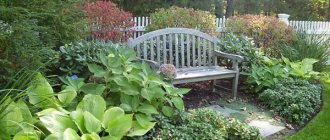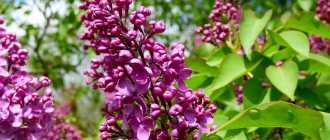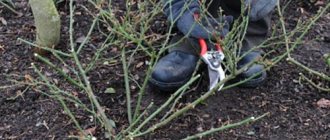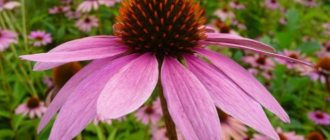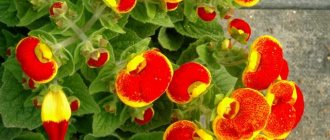At the end of the last century, vertical gardening became an iconic element of European garden design. Planters of all kinds, hanging baskets, vertical flower beds and flower towers filled the large and small gardens of Europe. They have taken root especially well in cities where concrete and glass predominate and there is so little space for greenery. Thanks to this fashionable fad, interest in ampelous plants with hanging shoots-lashes has significantly increased. It is especially beautiful when these shoots are decorated with flowers. In vertical gardening, plants with small flowers and lush, abundant flowering are especially appreciated. The British have already come up with a definition for this group of plants: "basket fillers".

Ampel plants
Traditionally, the main adornment of hanging baskets is the annuals, which are distinguished by a special luxury of flowering and, no less important, by its duration. Breeders are bringing out more and more varieties of summer planters for flowerpots and hanging baskets, which are subject to increased requirements for resistance in extreme growing conditions - in the sun, dry soil, and strong winds. Seedling growers now necessarily indicate in the catalogs whether a given variety is suitable for hanging decoration.
Among the summer, plants with ampelous plants are especially appreciated hanging shoots. The range of such plants for hanging flower baskets is truly huge: in addition to traditional begonias, verbena, ivy-leaved pelargoniums, nasturtium, lobelia, ampelous forms of petunias are very popular in the West, as well as plants that are still unfamiliar to us - diastia, bacopa and bidense and others.
Features of ampel indoor plants
The main feature of this species is the presence of well-developed shoots, climbing stems. In order to decorate the room to your liking, these stems can be tied up. Direct them upwards or leave them hanging loose, for example, if the flower grows in a planter on the wall.


There are several varieties of ampel indoor plants. Some of them bloom with bright and eye-catching buds, while others are considered non-flowering. However, they look no less attractive, thanks to the beautifully colored leaves that have an original shape.
Attention! The variety has a significant effect on the content of the plant.
So, flowering species are recommended to be located in more illuminated areas of the room, while non-flowering species are more shade-loving. Of course, there is no need to go to extremes. Conditions should be moderate, because drought and heat, as well as insufficient sunlight, negatively affect any plant.
Benefits
The advantages of decorating a plot with ampels are obvious:
- Mobility... Planters and other hanging containers can be easily interchanged, creating new compositions each time and maintaining a constant sense of novelty.
- Versatility... You can decorate anything with hanging flower arrangements - a gray nondescript wall, a modest terrace, a gazebo in the yard, and even beds with vegetables. You can hang the planter on a rack dug into the ground or place it on an old, obsolete barrel or cart.
- Easy care... They do not require anything, except for regular watering and rare feeding. They grow like ordinary indoor indoor flowers.
- Functionality... They can cover nondescript places, ugly structural elements, etc. In winter, they will become a chic addition to the home interior, insulated loggia, winter garden.
- Economical placement... They do not require additional space when suspended.
- Visibility... A suspended flower garden is equally well visible from almost any angle.
- And, of course, decorativeness... They attract attention, create coziness, create an accent in the intended place, and complete the overall landscape idea.
Types of hanging flowers with names and photos
There are several varieties of such plants. Each of them differs from the others in its appearance, features of care.


Ampel indoor plants include:
- succulents;
- flowering plants;
- decorative deciduous varieties.
Moreover, each type includes many of the most diverse indoor flowers with their inherent features.
Succulents
A special feature of this group is the presence of tissues that are capable of accumulating moisture. This means that they can grow in arid regions, without moisture for a long time. In some species, the stem has this ability (for example, in cactus), in others, in particular, in ampelous, fleshy and dense leaves (for example, sedum).
Sedum (sedum). There are more than 600 species of this plant, and they are all diverse in their shape and color of dense leaves. Sedum is often grown both in the garden and at home. It is important to remember that he does not like abundant watering (since his leaves can accumulate water), direct sunlight and their complete absence.
The most common varieties are:
- Morgan;
- Weinberg;
- Siebold;
- The sedum is variegated.
Attention! In winter, it is necessary to observe the rest mode, that is, do not perform any manipulations with the flower (with the exception of very rare watering).
Lamprantus. There are about 100 known varieties of this variety. A distinctive feature of the plant is strong stems (can reach more than half a meter in length), fleshy, rather small leaves, as well as bright orange or pink flowers.
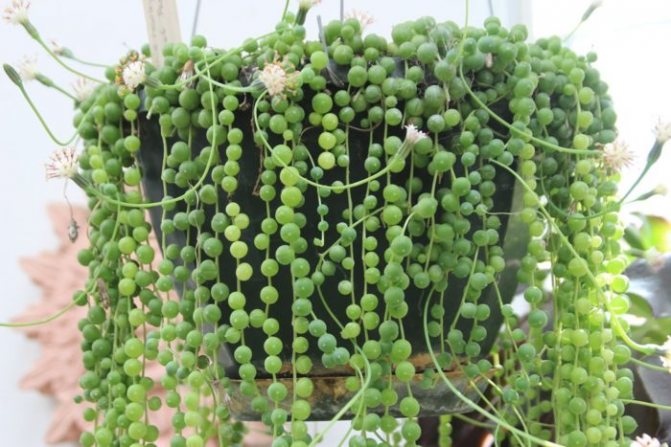

Popular varieties for home breeding:
- Deltoid;
- Orange;
- Great.
The flowering period may vary depending on the variety. Some species bloom in summer, others in autumn.
Anacampseros. Representatives of this species have a well-developed stem that spreads freely or hangs down. Small dense leaves are symmetrically located on it, which, as a rule, have a light green color. In summer, anakampseros blooms with large pink inflorescences.
For home breeding, the following varieties are well suited:
- Alston;
- Papery;
- Felt;
- Lanceolate;
- Compton.
With proper care, anakampseros grows well, blooms profusely and delights the eye for a long time.
Ceropegia. A perennial plant with a shallow root system, long, climbing stems, ovoid and medium-sized leaves. In the axils of the stems, you can observe small flowers of various colors throughout the year (depending on the variety).
At home, varieties are most often bred such as:
- African;
- Wood;
- Barclay;
- Sanderson;
- Stapelliform.
Most often, ceropegia is placed in well-lit areas of the room. The plant needs a sufficient amount of sunlight, regular, but not very frequent watering, including in the winter season.
Blooming
A feature of this type of ampelous is the presence of beautiful and diverse flowers.Their leaves are usually thin, medium-sized and varied in color, most often green.


Clerodendrum. The stems of this flower are vines that can hang freely from a height or climb up (if supported). The leaves of the clerodendrum are elongated, bright green in color. Terry small flowers are collected in large clusters. Most often they are white or pale pink. Appear in early autumn. The plant needs abundant watering, prefers well-lit areas and a sufficient amount of fresh air. Therefore, in the summer it is best to take it out to the balcony. At home, Clerodendrum Fragrant is most often grown.
Wax ivy. Plant with large leathery leaves and long, curly stems. At the end of summer, large, star-shaped flowers appear on it. They are collected in rounded inflorescences. The color of the petals is heterogeneous: closer to the center they are bright, along the edges - light. Wax ivy grows well. If you choose the right support, large sections of the wall can be beautifully decorated with a plant.
Attention! With an insufficient amount of moisture, wax ivy stops blooming, its leaves quickly fall off, only bare stems remain, which do not look very attractive.
Therefore, you do not need to stop watering even in winter when the plant is dormant. However, the amount of moisture must be reduced.
Asparagus. This plant has thin stems that hang loosely from the pot. It has small, bright green leaves that are densely spread over the entire surface of the stem. In summer, small white flowers appear on the plant, and by the end of this period, bright red fruits ripen. At this time, the flower looks especially original. Many people discard the plant as soon as the fruit is gone. However, with proper care it is possible to extend the life of an asparagus by several years.
Decorative deciduous
Many people appreciate the representatives of this type of ampelous plants for their lush greenery, abundant foliage of a fancy color, as well as for ease of care.
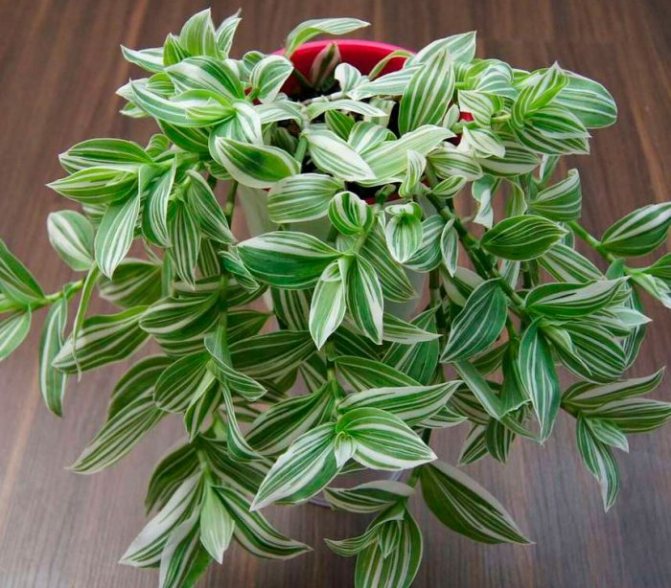

Tradescantia. Belongs to the family of herbaceous perennial plants of the Kommelinov family. Depending on the variety, Tradescantia can have foliage of various shapes and colors. Most often, there are leaves of a heterogeneous color (2-3 shades), but there may be plants of a uniform color. It takes root well, has a shallow root system, long stems-vines hanging down.
The most popular are the following types:
- Virginskaya;
- Hairy;
- Zebra-shaped;
- Variegated;
- Riverside.
Ivy. This species is characterized by very long stems that can cling well to any support, twisting around it. The leaves of the plant have a dark green color with lighter veins, a dense structure, a glossy surface and a bizarre shape.
Creeping ficus. The shrub plant has strong stems on which numerous climbing shoots grow. They are able to cling to the support, thanks to the small suction cups that are on their surface. Leaves of a bright green hue grow abundantly over the entire area of the main stems and shoots. Their surface is wrinkled, a mesh pattern is well traced on it.
Attention! Creeping ficus is not recommended to be placed next to other indoor crops. Its root system can invade nearby pots, destroying the roots of flowers.
The ampelous group is very diverse. It includes various species, ranging from cacti to fragile flowering crops. Each of them requires a special approach to growing.
Forms of vertical landscaping
Let's start with what has already become firmly established by domestic flower growers. Everywhere - in cities and in summer cottages - you can see hanging baskets with ampelous flowers.In recent years, they have become as much a hallmark of the average country house design as the green lawns in front of the house.
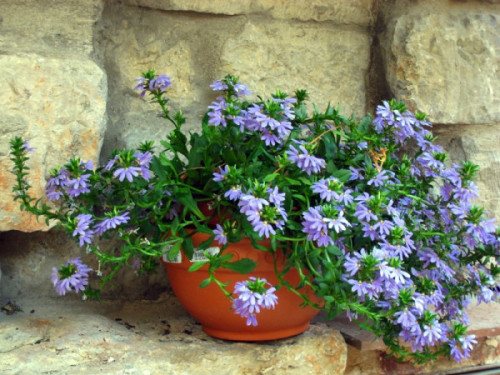

Scovola
Traditional hanging baskets are made from plastic-coated wire. The inside of the basket is lined with a special material made of coconut fibers, wool or wood processing waste. All of these materials hold the soil well and do not allow moisture to pass through. Slits are made on the side and plants are planted there, which form a spectacular blooming ball.
If there is no special material at hand, the flower basket can be lined with a layer of sphagnum moss. This bedding looks very natural. Solid baskets of wicker twigs are often used, but it is difficult to plant plants in them from the side.


Ampel plants
The main problem of "hanging" flower beds is the rapid drying of the soil. Therefore, only drought-resistant plants can be planted in them, for example, ivy pelargonium, ampelous varieties of petunias, verbena, as well as a number of new ampelous plants that have appeared on sale recently. It is useful to add special granules to the soil with which you fill the container, which are capable of accumulating moisture. Thanks to this, plants planted in a basket will suffer less from drying out of the soil.
If today you will not surprise anyone with a hanging basket, then a vertical flower bed or a flower tower can still be considered a relatively new word in domestic floriculture.
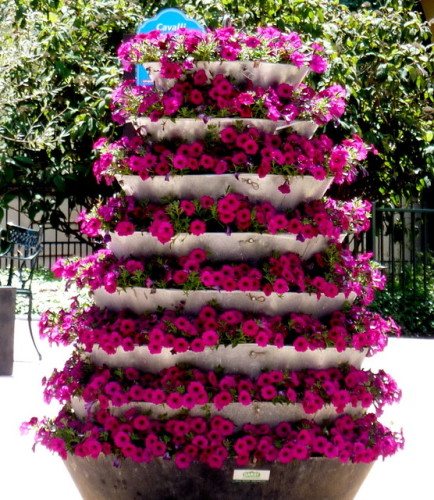

Ampel plants
Vertical flower bed easy to arrange yourself. Take 4 pegs and hammer them into the ground. Then join the plastic coarse mesh with the black lutrasil and secure it to the pegs. The resulting container is filled with earth, and two tubes are inserted inside for watering the plants. Seedlings are planted from the side in lutrasil incisions. It can be not only flowers, but also strawberries, herbs, ornamental vegetables. Although you have to tinker, but the result will not be ashamed to boast to your neighbors.
And finally, the latest peep of flower fashion - the so-called flower tower... It consists of a plastic bag with a diameter of 20-30 cm, which ends with a bowl at one end, and with a hanging hook at the other. The bag is filled with soil, and holes are cut in the walls for planting flowers. Water this flower structure through a container located at the base of the flower tower.
Growing and caring at home
In order for ampelous cultures to develop normally and please the eye, they must be properly looked after. In addition to regular watering, crops need to be fed, cut off in time in order to remove dead leaves and maintain a neat shape.
Selection of soil and pot
For ampelous crops, it is necessary to create suitable growth conditions. First of all, this concerns the choice of soil and pot. Since ampelous species have long stems, it is best to plant them in pots hanging on the wall. So the shoots of the plant will develop unhindered.


In some cases, you need to take care of the support, especially if you want to decorate the wall beautifully. The planting pot must meet certain requirements:
- Size and shape. Shallow but fairly wide pots work best. Indeed, the root system of most of these plants develops in the surface layers of the soil.
- Color. Light shades work well as they don't heat up as much in the sun. Overheating can damage the roots of the plant. It also contributes to acidification of moisture in the soil and the development of fungal diseases that affect the roots.
- Material. Lightweight plastic planters are most suitable. It is more convenient to hang them on the wall. If the plant is supposed to be placed on a windowsill, it is recommended to choose ceramic pots.
As for the choice of soil, it is important to ensure that it is as light as possible. The soil should not contain dense clods, it should be homogeneous.Therefore, the soil is best mixed with sand. In this case, the roots will grow more easily.
Lighting
The choice of a suitable site is an important condition for the normal growth and development of ampelous. These conditions differ depending on the species. So, succulents, due to their ability to accumulate moisture, thrive in well-lit places.
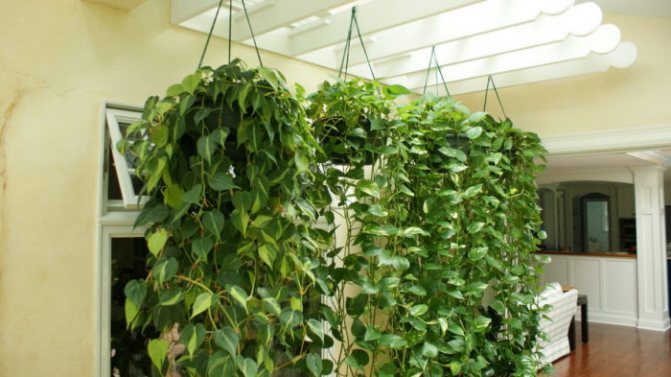

Most flowering and deciduous varieties require milder conditions. It is better to place them in partial shade. So they will receive the required amount of sunlight without fading from its excess.
Attention! It is believed that flowering varieties with light leaves need more ultraviolet radiation, so it is recommended to place them in more illuminated areas. Ampel species with dark leaves tolerate shaded space better.
Therefore, if a situation arises when the flower turns yellow and withers, it is worth changing its location.
Watering rules
Each flower needs moisture for normal growth. But an excess of it can be as destructive as a lack.
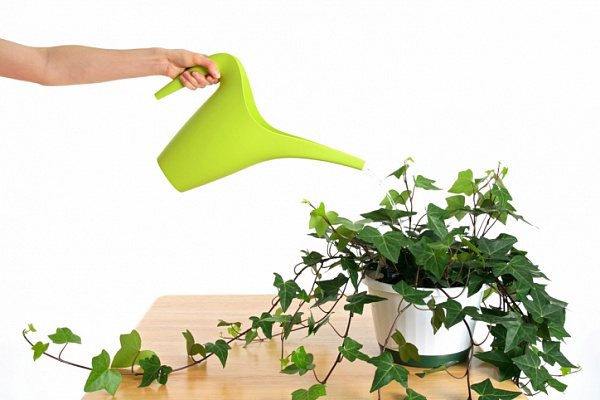

At the same time, the amount of water, the frequency and abundance of irrigation depend on many factors, such as:
- kind of culture;
- season;
- growing conditions.
Succulent plants need to be watered quite rarely, about once every 2 weeks. Ornamental deciduous species require more moisture. It is best to water once every 4-5 days. Flowering crops need the most abundant and frequent watering. It is best to water them once every 2-3 days.
Depending on the season, ampelous requires a different amount of moisture. So, in summer and autumn (during flowering) they need to be watered as often as possible. In such conditions, moisture evaporates faster, and more of it is needed for the development of buds.
In the winter season, many ampelous fall into a state of dormancy. All metabolic processes in them slow down significantly, therefore, plants need to be watered less often (succulents are generally not recommended to be moistened). But if the plant blooms all year round, then in winter it needs sufficient moisture. It is best to water the flowers before noon or in the evening.
Reproduction
The most popular method for ampel breeding is cuttings. To grow a new viable plant, you need to choose the right planting material. Young cuttings are well suited for this - shoots with 2-3 buds, from which new stems and leaves will form in the future.


Important! Cutting is best done in late spring or summer. During these periods, the plant is most viable. The best time for the procedure is early in the morning.
To separate the stalk, you need to choose a suitable shoot and cut it off with a sharp knife. The cut must be carried out at an angle. After that, the cut is sprinkled with well-crushed charcoal, and then placed in the substrate. For this, river sand is usually used, mixed in equal proportions with peat. The substrate must be well moistened. The shoot should be in this mixture until a few strong roots appear. After that, it can be transplanted into the soil.
How to use for decoration
A hanging vase with a lush hanging cascade of flowers is hung in any part of the garden, on the balcony, near the door, window, on the veranda. With the help of ampelous plants, you can revive a boring gazebo or decorate a personal plot. The planter can be hung from pergolas, pyramid stands, lattice fences, berso.
If the flower does not like the shaded place, it grows poorly and blooms poorly, it can be transferred to the sun. Hanging plants can be hung anywhere. In summer, in sunny weather, the flower can hang on the fence or on the cornice of the house. Before a storm or bad weather, it can be removed and brought into the room.
A hanging vase with a lush bush dotted with numerous flowers can be hung on the wall of the house to hide stains or loose plaster. At the entrance to the building, you can put a metal frame and hang several pots on iron rods. Falling plants in pots, suspended from the wall with the help of forged metal mounts, look beautiful.
Supports and fasteners for hanging flowers can be made by hand or bought ready-made in a garden store.
Cascading flowers are usually planted in purchased plastic pots. If you wish, you can independently make a basket from a vine or from twigs. Homemade pots can be in the shape of a ball, cone or rectangular box. In garden or flower shops, you can buy metal, plastic chains or pendants for hanging pots.
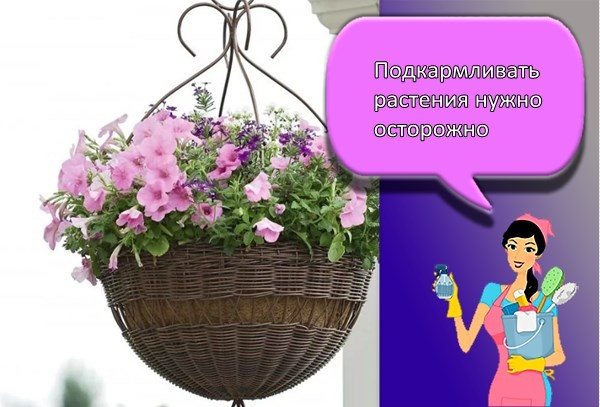

Ampel flowers are brought out into the street in spring, in the middle or at the end of May. Warm weather should be established by this time. If return frosts are possible at night, it is better to bring flowers into the house in the evening. In summer, ampelous crops can hang outdoors all season. In autumn, with the onset of cold weather, the pots are removed and brought into the room.
It is advisable to keep perennials in a warm room in winter and water them from time to time. During the rest period, watering is carried out occasionally, making sure that the soil does not dry out. In winter, the plants are not fed. With the arrival of summer, the pots are again taken out into the street.
Are there any shade-loving ones?
Most ampelous prefers moderate conditions of detention and partial shade. Abundant lighting leads to wilting, and a lack of sunlight inhibits development. Such species are considered to be shade-tolerant. But among the "ampels" there are also shade-loving species, for which a shaded location is considered the most preferable. This type includes most decorative deciduous varieties with dark foliage (for example, ivy, ficus).
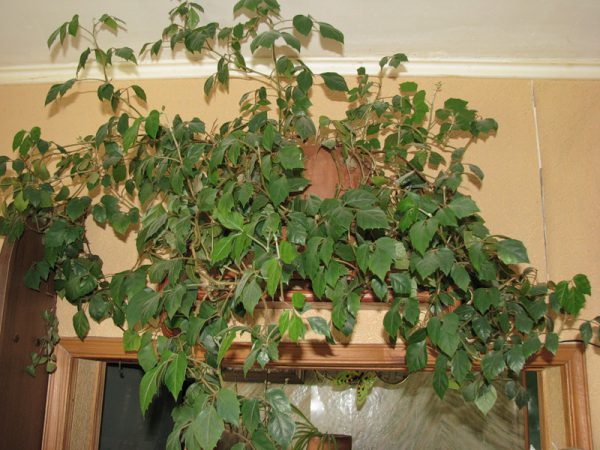

With proper care, ampelous plants will delight their owners with an attractive appearance for a long time. They are easy to plant, propagate and care for, so they can be grown even by a beginner who has not yet mastered the floriculture skill.
5 / 5 ( 1 vote)
What is Ampel?
Ampel plants or ampels - decorative representatives that are grown in hanging pots, baskets, vases. The name "ampelous" comes from the Latin word Ampella, which is translated into Russian as "small bottle".
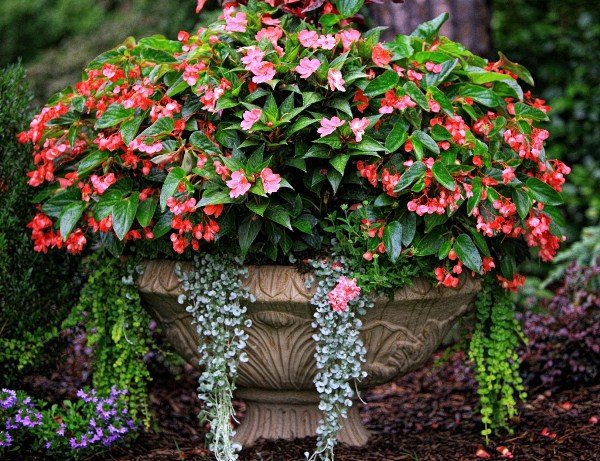

Ampel flowers
You can put any flowerpot in pots or vases, but best of all for the ampel, climbing, creeping or falling shoots are suitable... Ampels can grow in an apartment, greenhouse or in the ground.
Calibrachoa.
Externally, calibrachoa is very similar to petunia, but these genera also have significant differences. Calibrachoa is photophilous and thermophilic.
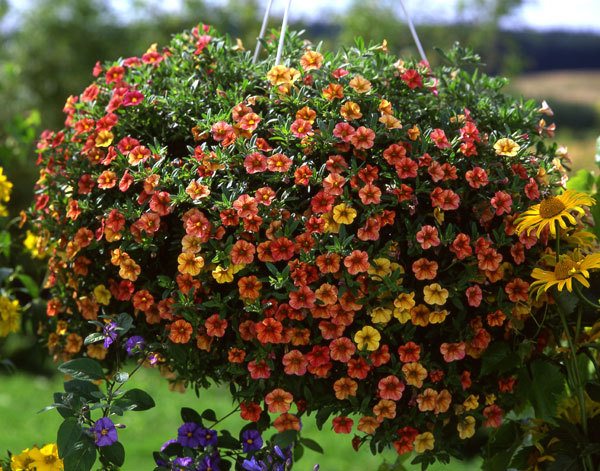

Grows well in open, sunny places. Ampel calibrachoa can suffer greatly from the wind, therefore baskets and flowerpots with them should be placed in a place protected from the wind.
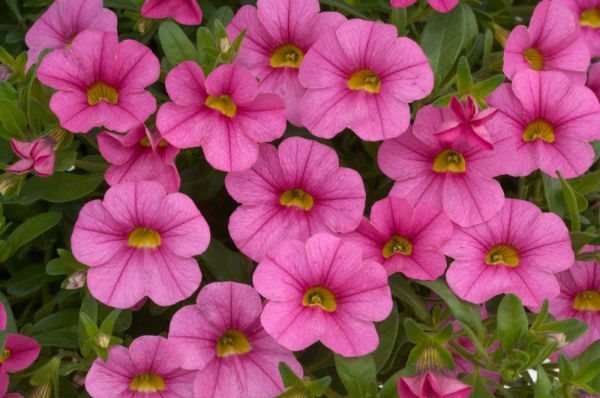

Prefers loamy or sandy loam soils, but can grow on any fertile enough. It responds well to the introduction of humus or compost into the soil, but not fresh manure.
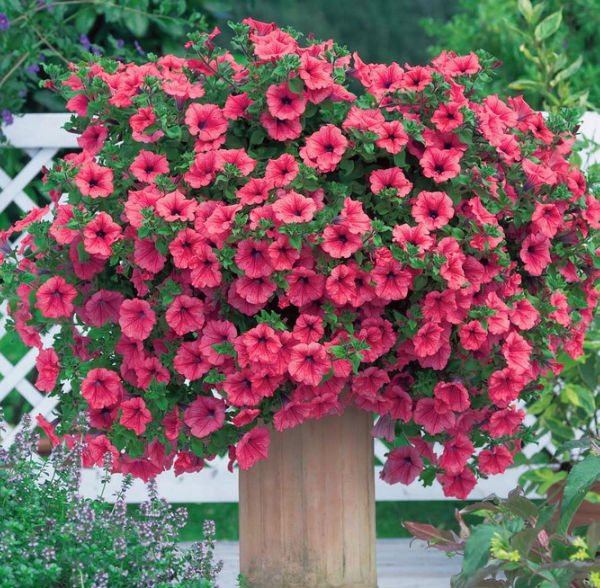

Blooming for more than one year
Yellow daisies - perennial flowers
Ampel perennials greatly simplify the life of the gardener, since they do not need to be sown every year. It is enough to provide them with certain wintering conditions. These include:
- pleasant scovola winters in a humid room at a temperature not higher than 10 ° C;
- dichondra hibernates with additional lighting and sparse watering;
- Bacopa will not bloom in winter, but if you water it moderately, it will overwinter comfortably;
- Campanula equifolia is an ampelous perennial that blooms all summer. It transfers winter together with houseplants. Popularly referred to as "bride and groom";
- perennial lobelia will overwinter if it is covered and not allowed to overcool;
- geranium can also winter in an apartment, with moderate watering and light, it blooms in winter.
Bacopa.
Bacopa is best grown in sunny areas, but little shading is not at all scary to it. In the hot season, water should be watered in the morning and evening (after sunset). Also, when collecting deciduous mass, regular spraying should be carried out at least 2 times a day. After the appearance of buds, this procedure is stopped.
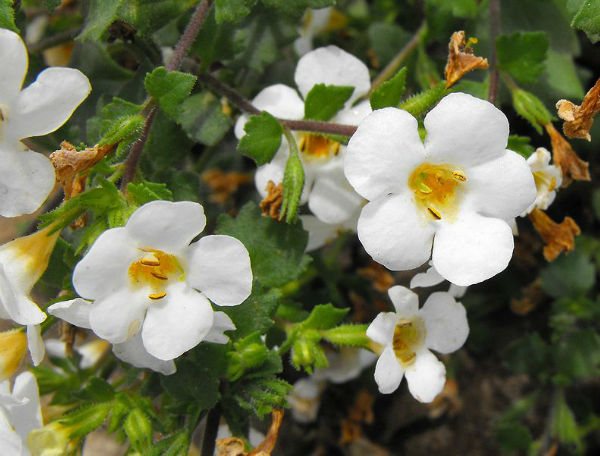

Bacope does not need to remove flowers because it is self-cleaning. The plant is attractive even during the period of long rains, it does not lose its decorative effect.


Bacopa ampelous can withstand temperatures up to -5 °. In winter, the plant should be kept in a bright room with reduced watering. The temperature in winter should be up to 14 ° C. Bacopa propagates by seeds as well as cuttings. To get cuttings, you need to cut off the upper part of the shoot. Rooting time is from January to March, or from August to September.
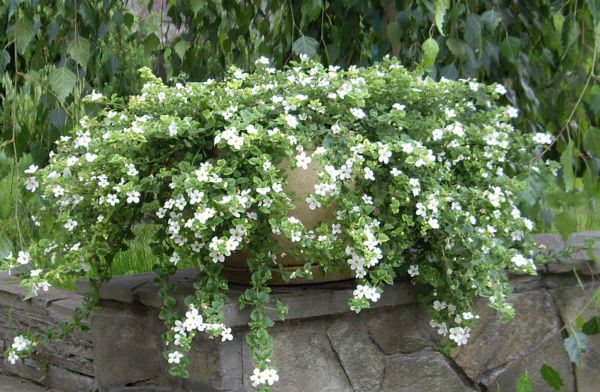

Compositions
Ampel impatiens - flower, planting and care
You don't need to be a designer to create a beautiful composition. The main thing is to choose the right varieties. Plants should complement each other. Compositions can be different: from a simple combination of different colors to a professional selection. For example, you can plant yellow, red or orange petunias in one planter.
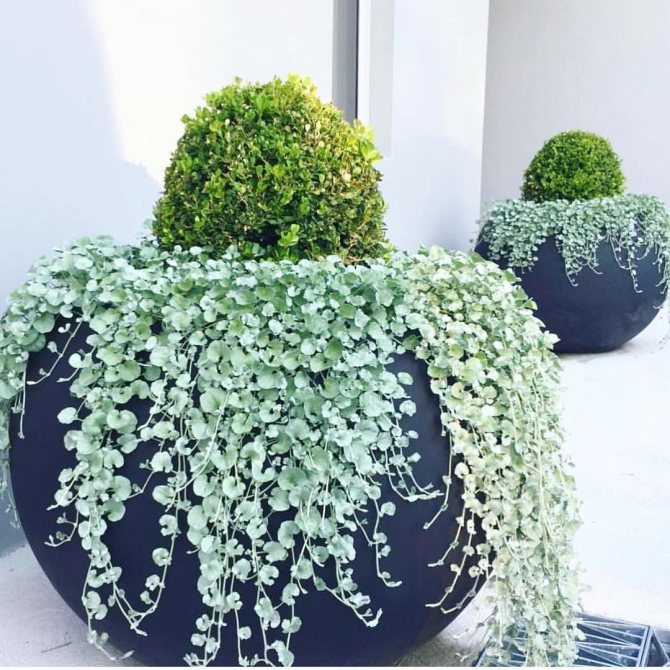

Composition of creeping
In general, ampelous plants have many colors. The main thing to remember is that the landings should be of the same height so as not to shade each other.
For a beautiful lawn, you can use undersized and creeping. To do this, you need to plant the first in the middle, and the second along the edges. You can also put pots with different colors around the perimeter of the site. Such oases will surely become the property of the garden. Cascading compositions begin to plant from the far row. Moreover, the plants for this are chosen the longest, and by the end they are planted undersized. Such a composition looks unusual if it combines flowering and non-flowering varieties.

